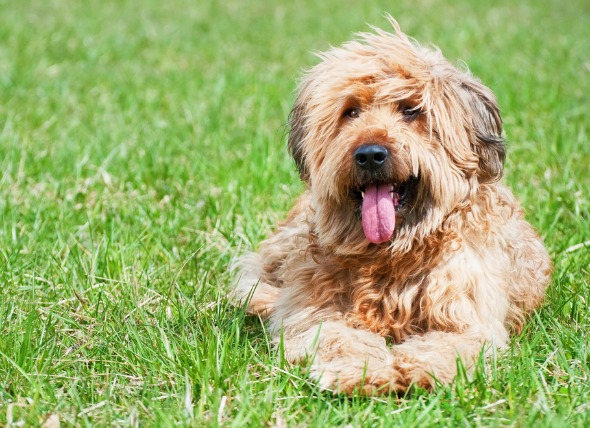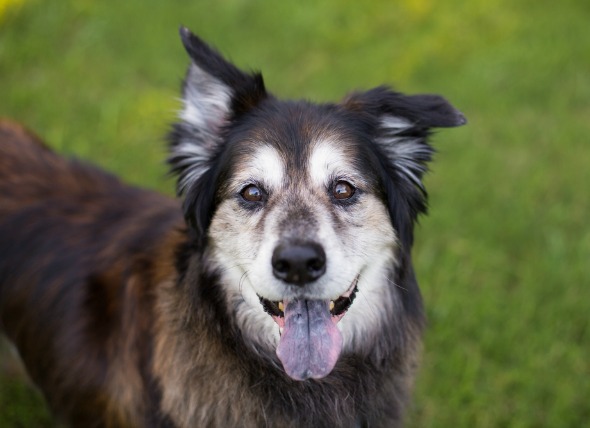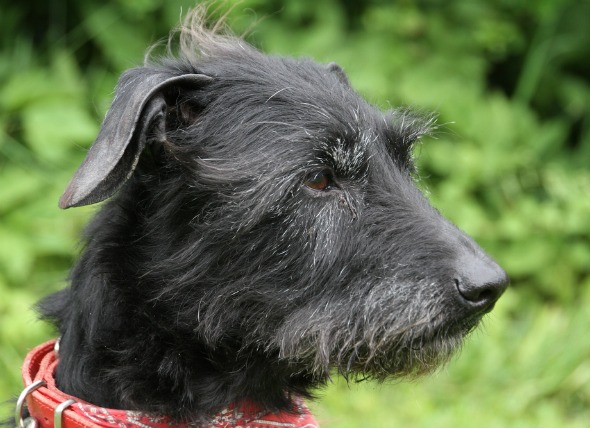

The retina is the tissue that lines the inner surface of the eye, and is the light sensitive part of the eye that acts as the brain's camera, transmitting images through the rods and cones that are part of its structure, thus enabling the experience of vision. The retina is part of the central nervous system (CNS) and the only part of the CNS that can be easily imaged and examined. In retinal degeneration, the cells of the retina begin to decline in function, thereby leading to impaired vision or even blindness. There are many causes for retinal degeneration.
Dogs
Mean Age and Range
You will need to give a thorough history of your dog's health, onset of symptoms, and possible incidents that might have led to this condition, such as trauma or exposure to toxic substances. Your dog's diet will also be taken into consideration, since this may be a supporting cause.
Your veterinarian will perform a complete physical exam on your dog, taking into consideration your dog's lineage and whether there might be a genetic link. Standard laboratory tests include a blood chemical profile, a complete blood count, an electrolyte panel and a urinalysis, in order to rule out other causes of disease.
The physical exam will entail a full ophthalmic exam using a slit lamp microscope. During this exam, the retina at the back of the eye will be closely observed for abnormalities and the electrical activity of the retina will also be measured.
Genetic testing may also be done if your dog belongs to a breed that is prone to familial retinal disease. Additionally, hormonal causes may bring about retinal disease, and this will be considered as well. X-rays, computed tomography (CT) and magnetic resonance imaging (MRI) can be used effectively to screen for the effects of hormonal abnormalities.
There is no effective cure for retinal degeneration. Since diet can cause retinal degeneration, providing your dog with a balanced (omnivorous), low-fat diet may improve or mitigate the degeneration which has already occurred. Surgery is not indicated if your dog's eyes are blind and non-painful. There are currently no medications available that can reverse retinal degeneration.
Dogs that have become blind as a result of suffering from retinal degeneration are generally not in pain, so they can continue to lead healthy, full lives once they have learned to compensate for the loss by sharpening their other senses.
Be sure to keep your dog under a watchful eye at all times so that it is not at risk of being injured or attacked. Your veterinarian will exam your dog's eyes for further retinal degeneration and for possible developing cataracts, glaucoma or uveitis at follow-up appointments.
Do not breed your dog if it has been diagnosed with retinal degeneration, as the disease is usually genetically transmitted. To prevent retinal degeneration caused by diet inadequacies be sure to feed your dog a balanced (omnivorous), low-fat diet.
 Increased Urination and Thirst in Dogs
Polydipsia and Polyuria in Dogs
Polydipsia refers
Increased Urination and Thirst in Dogs
Polydipsia and Polyuria in Dogs
Polydipsia refers
 Stomach and Intestinal Inflammation in Dogs
Eosinophilic Gastroenteritis in Dogs
Eosinophilic
Stomach and Intestinal Inflammation in Dogs
Eosinophilic Gastroenteritis in Dogs
Eosinophilic
 Intestinal Tumor (Leiomyoma) in Dogs
Leiomyoma of the Stomach, Small, and Large Intestine in
Intestinal Tumor (Leiomyoma) in Dogs
Leiomyoma of the Stomach, Small, and Large Intestine in
 Abortion in Dogs
There are numerous reasons for why pet owners wou
Abortion in Dogs
There are numerous reasons for why pet owners wou
 Enlarged Liver in Dogs
Hepatomegaly in Dogs
The term hepatomegaly is use
Enlarged Liver in Dogs
Hepatomegaly in Dogs
The term hepatomegaly is use
Copyright © 2005-2016 Pet Information All Rights Reserved
Contact us: www162date@outlook.com